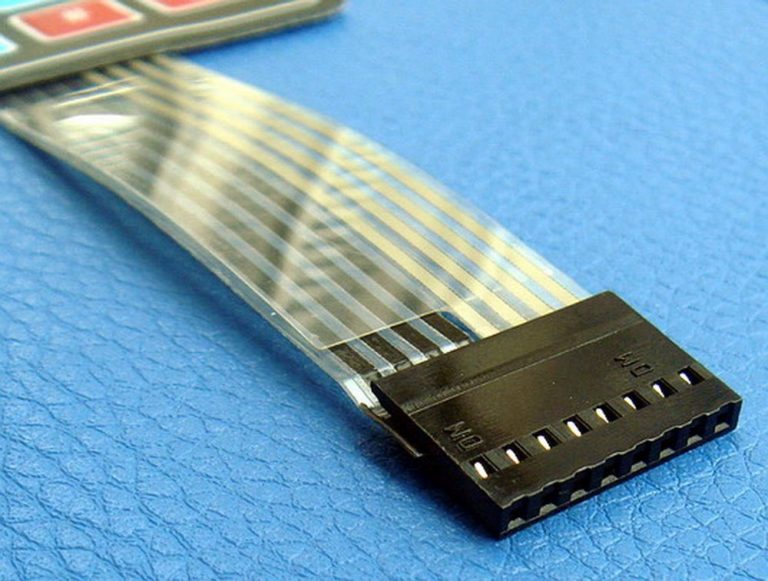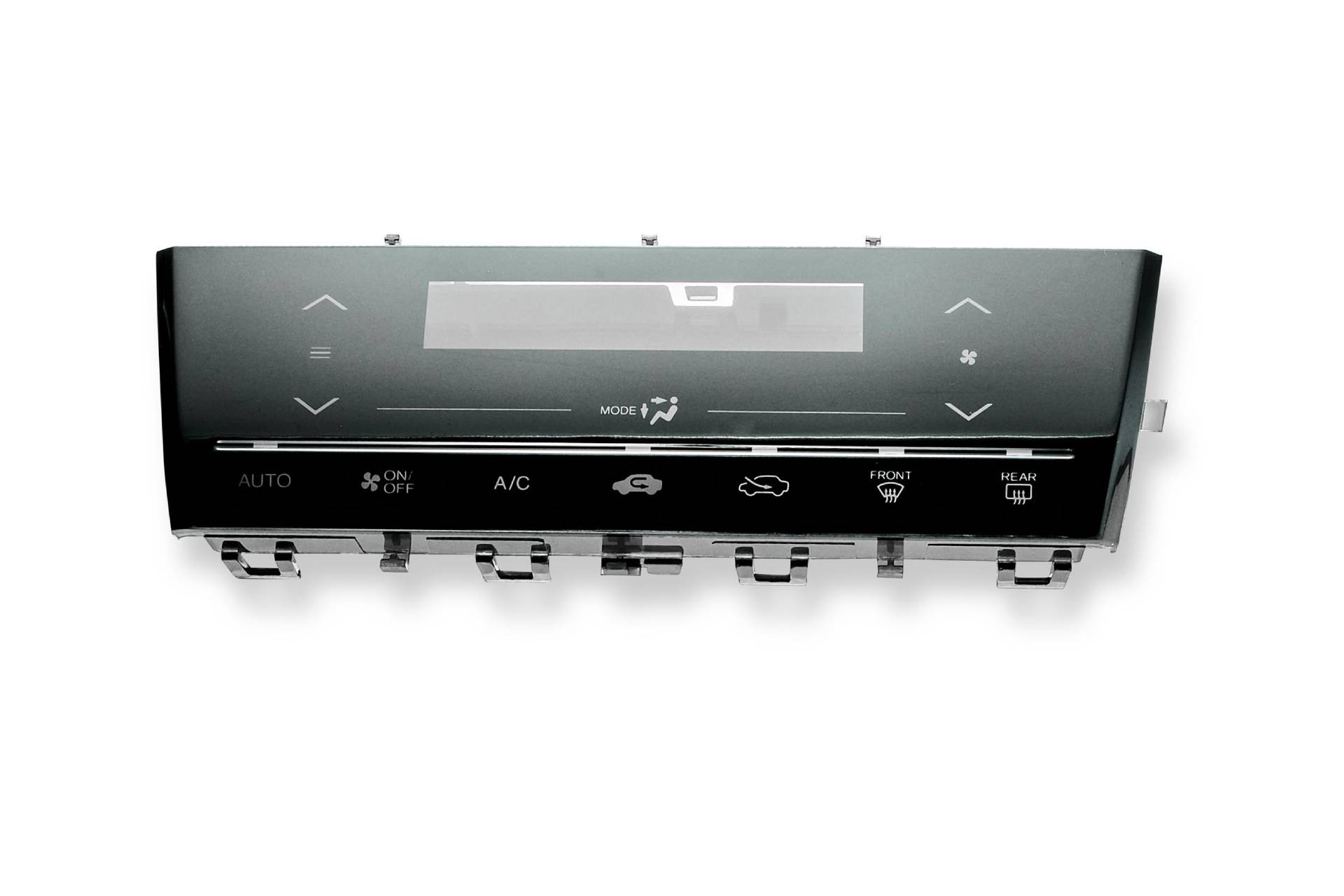A good membrane switch manufacturer provides adaptable design options for complex applications.
A good membrane switch manufacturer provides adaptable design options for complex applications.
Blog Article
What to Try to find When Choosing a Membrane Layer Change for Your Task
When you're picking a membrane button for your project, a number of vital variables enter play. You'll need to think of the products, style, and exactly how well it lines up with your brand. Sturdiness and functionality are important, yet so is the reputation of the manufacturer. Recognizing these elements can aid you make an informed decision-- one that stabilizes top quality and cost successfully. Let's discover what you need to consider to ensure your option satisfies all your task requires.
Comprehending Membrane Layer Change Elements
When you dive right into the world of membrane switches, it's important to grasp the key parts that make them operate. Below that, the spacer layer warranties there's adequate distance in between the circuit and the overlay, permitting the button to trigger without consistent stress.
The circuit layer, frequently made from published conductive inks, develops the electric pathways. When you press a button, the circuit closes, sending a signal to the device. Understanding how these layers interact aids you pick a membrane layer button that's dependable and fits your task demands. Pay attention to the thickness and product of each layer, as these variables influence toughness and capability in various settings.
Product Selection and Its Impact
Picking the appropriate products for your membrane layer button can substantially affect its performance and durability. The selection of substrate, commonly polyester or polycarbonate, affects toughness and flexibility. Polyester is much more abrasion-resistant, while polycarbonate offers better clearness and toughness.
Following, consider the adhesive. It requires to stand up to environmental elements like wetness and temperature level adjustments. A solid sticky guarantees that your membrane button stays undamaged gradually.
Don't forget concerning the visuals overlay. The printing method made use of, whether silkscreen or digital, impacts the switch's looks and long life. High-grade inks will withstand fading and scratching, keeping an expert look.
Lastly, consider ecological conditions. If your device will certainly be subjected to harsh chemicals or extreme temperatures, select materials developed to sustain these challenges. Your selections in materials will ultimately establish the button's dependability and customer contentment.
Style Considerations for Individual Experience
Picking the ideal materials lays the foundation for a successful membrane button, however the layout likewise plays a considerable role in user experience. You'll intend to review just how the design impacts use (membrane switch manufacturer). Maintain buttons and symbols intuitive and well-spaced, making it easy for customers to navigate without confusion

Shade and contrast are additionally essential; guarantee that your layout is visually appealing yet still useful. High contrast helps individuals conveniently determine buttons, particularly in low-light problems.
Finally, reflect on the general aesthetic. A sleek and modern design can boost user assumption and make your item more enticing. Balancing capability with an engaging layout will lead to a far better user experience and eventually, a much more effective product.

Environmental Factors and Sturdiness
When selecting a membrane switch, you require to consider how it'll execute in various environments. Variables like temperature level resistance, moisture and chemical exposure, and mechanical wear can significantly affect its resilience. Comprehending these components will help you select a switch that takes on your particular conditions.
Temperature Level Resistance Demands
As ecological conditions can differ widely, recognizing temperature level resistance is vital for guaranteeing the durability of your membrane layer switch. You require to examine the temperature level variety in which your device will certainly run. High temperatures can create products to break down, leading to failure, while low temperature levels could make elements weak and prone to splitting. Ensure to inspect the requirements of the products used in the button, like the glue and overlay, as they directly impact performance. It's likewise smart to contemplate prospective temperature changes and their effects on the button's reliability. By picking a membrane layer button with adequate temperature resistance, you'll enhance its lifespan and preserve functionality in challenging atmospheres. Pick carefully to prevent pricey replacements down the line.

Wetness and Chemical Direct Exposure
Moisture and chemical exposure can considerably influence the efficiency and long life of your membrane layer button, so it's essential to understand the atmosphere in which it will be utilized. If your job includes high moisture or exposure to liquids, seek safety layers and sealants that can improve resistance to dampness. Additionally, take into consideration the types of chemicals your switch might come across. Particular products can weaken when revealed to solvents, oils, or extreme cleansers. Choosing the best materials, like polycarbonate or polyester, can help resist these elements. Constantly consult the manufacturer's specifications for chemical compatibility to guarantee your membrane switch maintains its capability with time. By focusing on dampness and chemical resistance, you can boost the longevity of your button in tough atmospheres.
Mechanical Wear and Tear
While you may prioritize functions like appearances and functionality in your membrane button, mechanical wear and tear can substantially influence its performance over time. Constant pressing can lead to degradation of materials, triggering concerns like responsive feedback loss or even change failing. Picking a sturdy switch guarantees durability and reliability, stopping costly replacements and downtime in your project.
Customization Options for Branding
When it pertains to branding your membrane layer button, modification alternatives are crucial. You can pick design components and colors that show your brand name, together with specific logo placement and size to improve visibility. Furthermore, choosing the right products and appearances can elevate the general feel and look, making your item attract attention.
Layout Elements and Colors
A large range of layout components and colors can make your membrane switch not just practical but additionally visually appealing, enhancing your brand name identity. When picking shades, believe regarding your brand's scheme; they need to reverberate with your audience and evoke the appropriate feelings. You can also discover different coatings like matte or shiny to develop various aesthetic results. Don't forget appearances; including a tactile aspect can enhance customer experience and make your button attract attention. Consider integrating personalized graphics or patterns that line up with your brand name message. By thoughtfully choosing design elements and colors, you not only create an item that looks wonderful but additionally enhances your branding continually and successfully.
Logo Design Placement and Dimension
After completing your style aspects and colors, the next action is to concentrate on logo design placement and dimension. Your logo design is a vital facet of your branding, so you'll desire it to stand apart without frustrating various other layout aspects. Show on where your logo design will certainly be most visible and impactful; usual positionings consist of the top or center of the button.
Do not neglect to consider exactly how the logo design aligns see this with customer communication. This interest to detail will enhance both capability and brand name identification in your project.
Material and Texture Options
Selecting the ideal products and structures for your membrane layer button can considerably boost both its functionality and aesthetic charm. You'll wish to examine choices like polyester or polycarbonate, as they provide durability and resistance to use. The structure of the surface area additionally plays an important duty; smooth finishes provide a streamlined appearance, while textured surface areas can boost hold and tactile responses.
Personalizing the materials and textures enables you to mirror your brand identification properly. You might choose a matte coating to communicate elegance or a shiny appearance for a contemporary touch. Do not ignore shade alternatives, as dynamic tones can make your switch stick out, while low-key tones can produce a more stylish look
Cost vs. Top Quality: Discovering the Right Equilibrium
When you're taking care of the choices for membrane buttons, stabilizing price and high quality can feel frustrating. A lower-cost button could conserve you money upfront, however if it Resources compromises capability, you could face higher substitute prices later on.
Search for makers that provide an excellent mix of price and high requirements. Research their track record and consumer testimonials to assess dependability. Often, investing a bit more in top quality materials can conserve you from future migraines.
Also, think about the long-lasting efficiency and guarantee alternatives. A slightly a lot more expensive switch with a strong warranty might confirm to be a smarter financial investment. Ultimately, it's regarding locating that wonderful area where you satisfy your budget while ensuring your job's success.
Evaluating and Quality Control Protocols
While you may find the excellent membrane switch layout, guaranteeing its quality with extensive testing procedures is crucial for long-lasting success. Begin by verifying that the producer adheres to market requirements, such as IPC/WHMA-A -620, to assure a reputable product. membrane switch manufacturer. You'll wish to look for detailed screening methods, consisting of ecological, mechanical, and electrical evaluations
Make sure the buttons go through sturdiness screening, simulating real-world usage to identify any type of possible failings. Focus on the supplier's quality control procedure, which ought to consist of routine inspections and audits.

Do not neglect to request examples and perform your own examinations to validate compatibility with your task. Take into consideration just how typically the manufacturer updates their protocols; development in testing can lead to improved quality. By focusing on these screening like it and quality guarantee procedures, you'll enhance the probability of an effective and resilient membrane layer switch for your application.
Frequently Asked Concerns
For how long Does a Membrane Switch Over Typically Last?
A membrane switch commonly lasts anywhere from 1 to 10 million cycles, depending on use and environmental factors. You'll intend to think about your certain needs to guarantee it satisfies your durability requirements effectively.
Can Membrane Layer Switches Over Be Fixed if Harmed?
Yes, you can in some cases repair membrane layer buttons if they're damaged, but it often relies on the degree of the damage. Minor concerns could be reparable, while more considerable damages generally requires substitute for appropriate capability.
What Are the Usual Applications for Membrane Buttons?
Membrane switches are commonly used in home appliances, clinical gadgets, and auto controls. You'll find them in consumer electronic devices, industrial tools, and also video gaming consoles. Their convenience makes them excellent for numerous user interfaces and atmospheres.
Exist Particular Qualifications for Membrane Switches?
Yes, there are certain qualifications for membrane layer buttons. Search for UL, CE, and RoHS accreditations to guarantee safety and security and compliance. These certifications show the switch fulfills industry criteria for high quality and environmental safety.
How Do I Make Certain Correct Setup of a Membrane Switch?
To guarantee proper installment of a membrane layer switch, clean the surface extensively, straighten it meticulously, and use also stress. Comply with maker guidelines for adhesive curing time to make the most of resilience and functionality.
Conclusion
When picking a membrane button for your task, keep these crucial elements in mind: focus on resilient products, emphasis on straightforward design, and think about modification for your brand. By very carefully evaluating these elements, you'll assure your membrane layer switch not just satisfies your task needs but likewise enhances user experience and shows your brand name identity efficiently.
Report this page